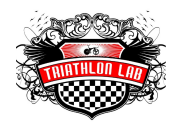BREATH RIGHT, SWIM BETTER

On land, breathing is quite natural, even during exercise. But in water it's a different story.
Holding your breath
A very common breathing error seen in athletes is holding the breath. This generally occurs while the swimmer's face is in the water, during what should be the exhalation. Because it may feel unnatural to breathe into water, instinctively, the athlete then holds his or her breath and inhales/exhales back-to-back quickly while the face is out of the water.
It's important to understand that when a swimmer feels desperate for air, it's actually from a buildup of carbon dioxide from holding the breath, not a lack of oxygen. Holding your breath while swimming creates an irregular breathing pattern that is unable to deliver appropriate amounts of oxygen to the muscles and organs.
Beyond that, when the lungs are full of air, they are incredibly buoyant like balloons, causing the chest to pop up too high and the hips and legs to drop. This creates a massive amount of drag that can easily be avoided by employing a consistent breathing pattern.
The rise and fall of your breath in the water should be nearly identical to when you regulate your breath on land. Focus on smoothly exhaling half of your lung capacity through your nose and mouth, as if you're sighing, the entire time your face is in the water. Next, aim to take a small, relaxed sip of air as your head and body roll to the side on each stroke cycle.
Related Article: 6 Tips for Your First Triathlon
This breathing pattern of ventilating the lung every stroke cycle (every two strokes) allows for a steady supply of oxygen, as well as a consistent removal of the by-product, carbon dioxide.
Not only will this allow for a rhythmic breath every two seconds or so, but it will also help to remove tension in the body caused by holding your breath.
Inhale, exhale, inhale, exhale: Let the breath be your tempo that syncs your stroke.
Pattern and timing of the breath
Swimming freestyle requires the marriage of many moving parts, as well as specific mobility and ranges of motion throughout the body. To further complicate matters, these moving parts must work harmoniously together while you are horizontal in a resistive medium.
Believe it or not, the pattern and timing of the breath is responsible for the success of nearly every other aspect of freestyle mechanics, most important being the timing of your stroke. If a late timing issue exists somewhere in the stroke, the cause will almost always be a late breath.
To help correct other potential timing issues, such as a dropped arm while breathing, focus on when you start and finish your inhalation. As the opposite arm drives and extends forward in the water, the head and body should be rolling to the side. The instant the opposite arm reaches full extension is the same moment you should begin to inhale. As the arm on your breathing side begins to extend forward over the water, your head and body should roll the opposite direction. If you are able to watch your hand recover and pass your face while inhaling, this is an indicator that you are timing your breath a bit too late. Appropriate timing of your breath ensures you have the maximum window of time to efficiently regulate your breath.
Adjusting to open water
It seems many athletes throw all of these focuses out the window when they swim in open water. Whether you're in a lake, river or ocean, each of the above principles applies the same to your stroke in open water. The caveat is that you are now in a dynamic body of water, and you are demanded to constantly adjust to the conditions at hand. With the movement of the open water, that clean pocket of air you worked to establish in the pool is now variable, changing each and every stroke. This demands some patience, humility and lots of practice.
Let your breath dictate your cadence, as well as all effort exerted throughout your body. If you are short of breath in the open water, the first priority is to tune into your breathing mechanics and reset your breath to the pattern you've been practicing in the pool. Mentally, this will conquer a major hurdle for most new open water swimmers.
Just keep breathing. Mastering the breath in the water can be the most rewarding achievement for both the swimmer and coach. Syncing your breath seamlessly with your swim stroke builds a strong foundation to keep you efficient in both the pool and open water.
Long may you swim,
Bryan Mineo



